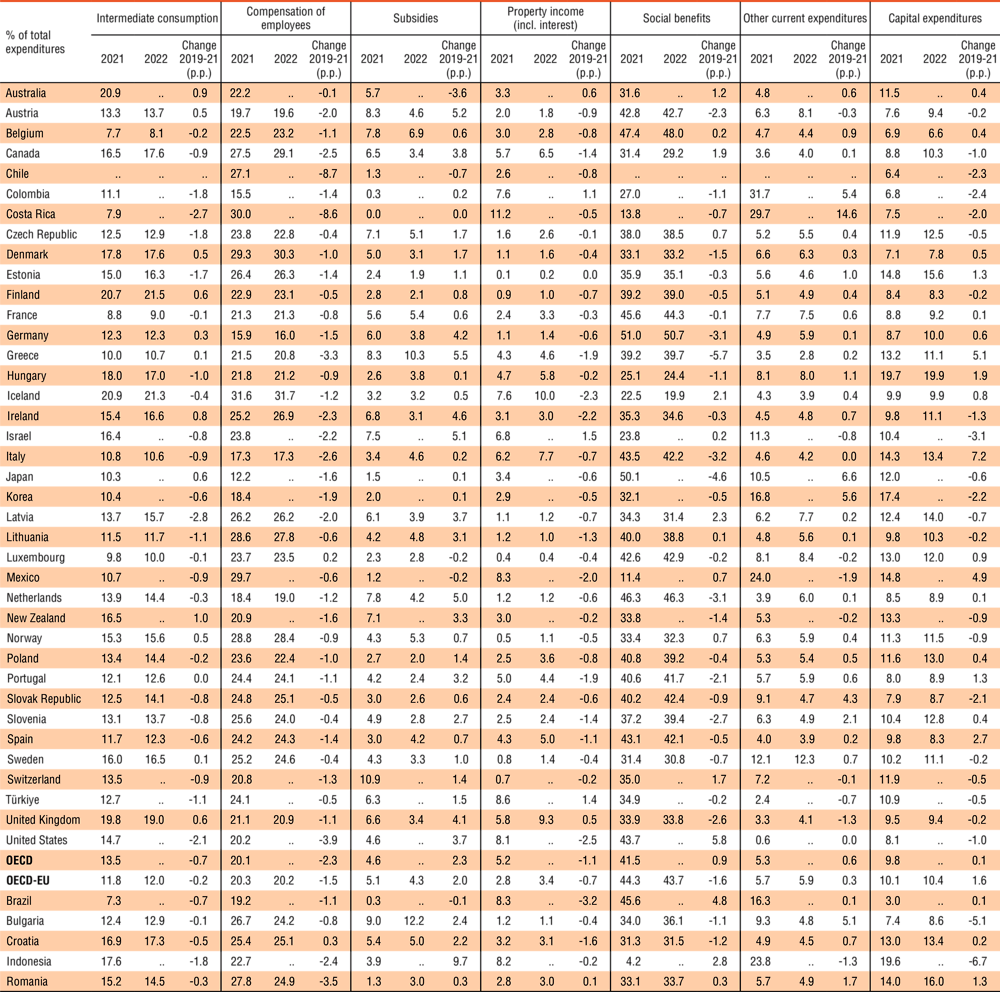Another way of classifying public spending is by economic transactions, for example employee compensation, financing subsidies, cash transfers such as social or unemployment benefits, and intermediate consumption (i.e. procurement of goods or services from the private sector that are used in government production). This classification is distinct from government expenditures by function, which groups expenditures by thematic categories (e.g. health, education, defence, etc.), as it distinguishes broader categories of government’s production function. By considering both types of classifications, it is possible to gain a more comprehensive understanding of government spending patterns and their impact on the economy.
On average the largest category of government expenditures is social benefits. In 2021, 41.5% of government expenditures were on social benefits on average among OECD countries and this share was up by 0.9 percentage points since 2019. In 2021, Germany and Japan had the highest share of expenditure on social benefits (51.0% and 50.1% respectively of total expenditures). In 2022, among countries with information available, those with the highest share of expenditures on social benefits had included Germany (50.7%), Belgium (48.0%) and the Netherlands (46.3%). Some countries saw substantial changes between 2019 and 2021 in the share of expenditures which were made on social benefits. The share increased most in the United States (5.8 p.p.), while the largest decreases during the same period were observed in Greece (a fall of 5.7 p.p.), Japan (4.6 p.p.), Italy (3.2 p.p.), the Netherlands (3.1 p.p.) and Germany (3.1 p.p.) (Table 11.11).
The second largest category of government expenditures is employee compensation, which amounted to 20.1% of total spending on average across OECD countries in 2021, a drop of 2.3 p.p. since 2019. Expenditures on employee compensation in 2022 were highest in Iceland (31.7% of total spending) and Denmark (30.3%). The shares were also high in Costa Rica (30.0%) and Mexico (29.7%) in 2021, the year for which data are available for these countries. Between 2019 and 2021, 37 out of 38 OECD countries reduced their spending on employee compensation as a share of the total expenditures. The largest falls were in Chile (8.7 p.p.) and Costa Rica (8.6 p.p.). Luxembourg was the only country with a slight increase (0.2 p.p.).
The category of government expenditures with the largest increase was subsidies, which rose by 2.3 p.p. between 2019 and 2021, to reach an average share of 4.6% of total spending across OECD countries. This increase is likely to be partially due to the effects of the COVID-19 pandemic, when many countries increased their subsidies to enterprises. Capital expenditures (0.1 p.p.) and other current expenditures (0.6 p.p.) also recorded moderate increases over the period (Table 11.11).

